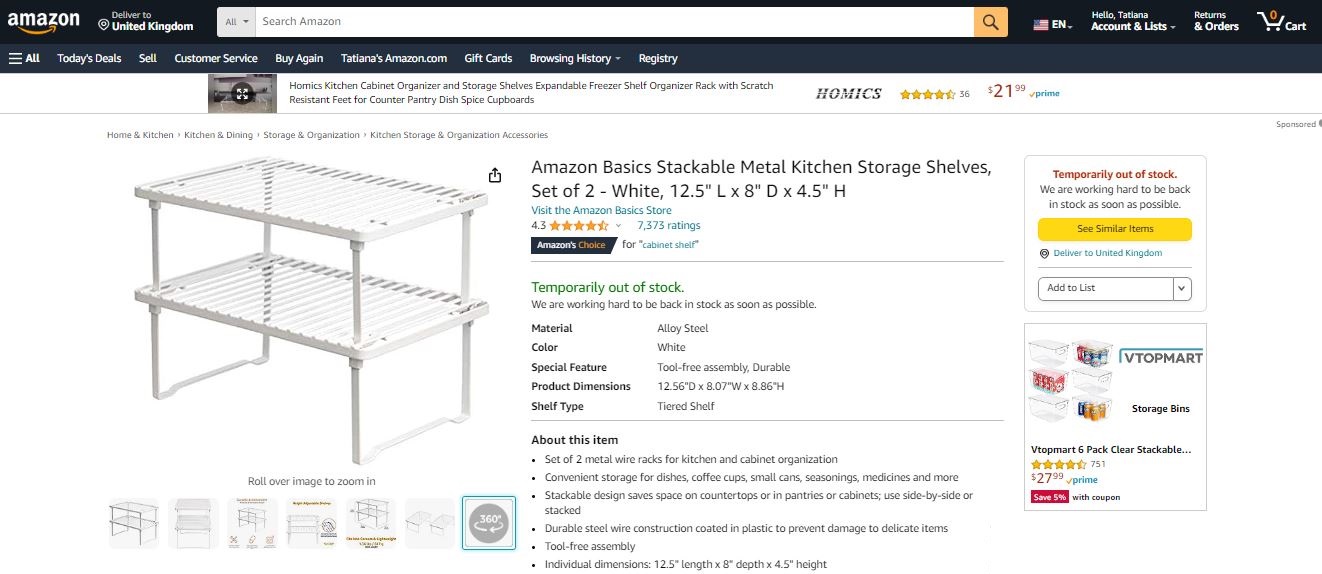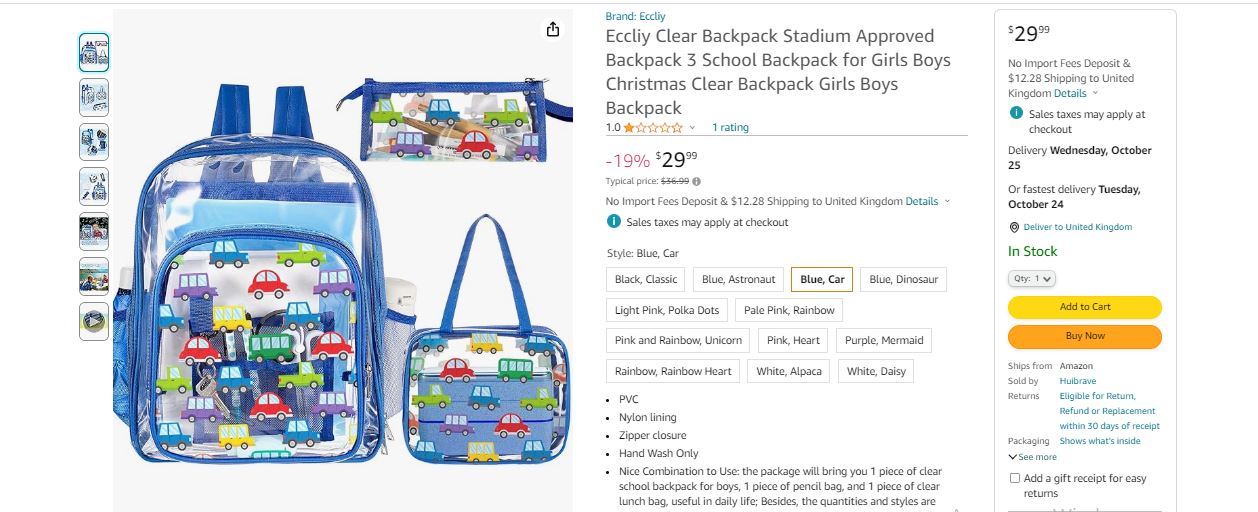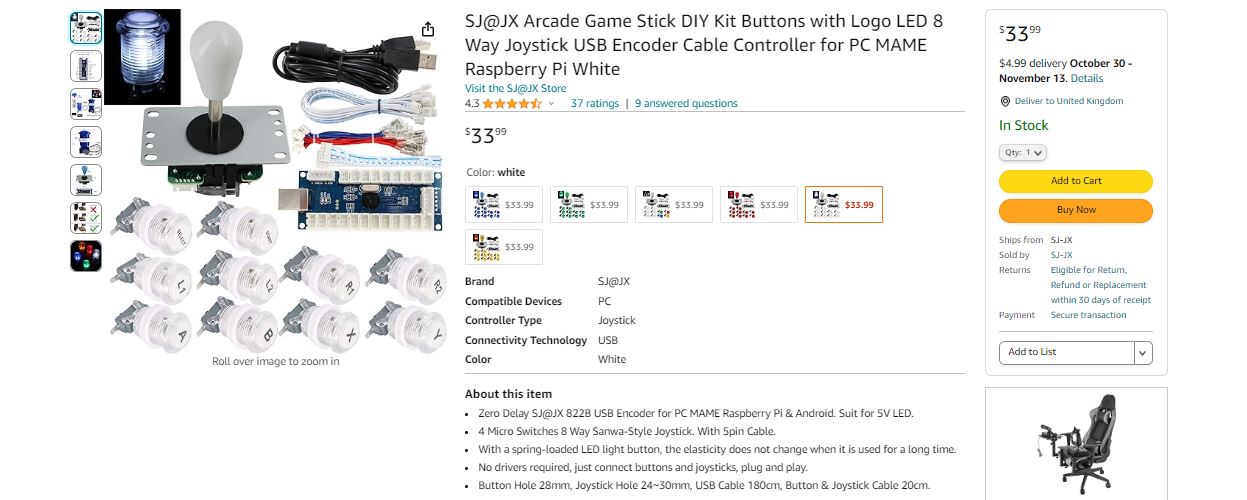Table of Contents
- 1 Amazon Private Label Pros and Cons
- 2 Amazon Private Label Pros
- 3 Amazon Private Label Cons
- 4 How to Start Selling With Private Label on Amazon
- 4.1 Step 1. Make a product research
- 4.2 Step 2. Find the right manufacturer
- 4.3 Step 3. Choose your brand logo, design, and packaging for the product
- 4.4 Step 4. Request product samples
- 4.5 Step 5. Choose your fulfillment strategy
- 4.6 Step 6. Create an Amazon listing
- 4.7 Step 7. Set competitive price
- 4.8 Step 8. Launch your product
- 5 How to Optimize Your Private Label Listing to Boost Sales?
- 6 Conclusion
Are you an Amazon seller looking to carve out your own niche in the world of e-commerce? Perhaps you’ve heard the term “Private Label” buzzing around the digital marketplace, and you’re eager to learn more about this powerful strategy. Well, you’re in the right place! In this post, we’re going to dive into the exciting world of Private Label on Amazon and explore what it means for sellers like you.
Picture this: Your very own brand, exclusive products, and the opportunity to establish a loyal customer base – all within the vast Amazon ecosystem. That’s precisely what Private Label represents. It’s a pathway to independence, creativity, and financial success, allowing you to break free from the constraints of reselling others’ products and truly own your destiny as an Amazon seller.
So, if you’re ready to unlock the potential of private labeling on Amazon and embark on a journey that could transform your e-commerce business, keep reading. We’re about to demystify the concept, share insider tips, and help you take the first step toward building your brand in one of the world’s largest online marketplaces.
Amazon Private Label Pros and Cons
In the competitive world of e-commerce, Private Label on Amazon empowers you to stand out, offer unique products, and build a brand that resonates with your target audience. These advantages make it a compelling choice for sellers who aspire to take control of their business and make a mark in the e-commerce landscape. At the same time, it comes with a set of challenges.
Amazon Private Label Pros
Selling Private Label on Amazon opens up a world of opportunities for entrepreneurs and e-commerce enthusiasts. This approach empowers you to create your brand, exercise control over your product listings, and secure a coveted spot in the Buy Box.
Let’s delve into the numerous advantages this strategy offers.
Your own brand
One of the most compelling reasons to dive into Private Label on Amazon is the ability to build your brand from the ground up. With a private label, you’re not merely a seller – you’re a brand owner. You can craft a unique brand identity, design your products to reflect your vision and establish a distinct presence in the marketplace. This branding power allows you to foster customer loyalty, a key driver of long-term success.
Control your listings
When you sell under your private label, you have full control over your product listings. This means you can tailor your product descriptions, images, and keywords to align perfectly with your brand and customer expectations. You won’t have to rely on the limited information provided by other sellers or manufacturers, ensuring that your listings stand out and are optimized for maximum visibility and conversions.
Win Buy Box
Securing the Buy Box is the holy grail for Amazon sellers. With Amazon Private Label products, you have a better chance of winning the Buy Box, as Amazon often prioritizes sellers who offer exclusive items. When you own the Buy Box, you gain a significant advantage by being the default option for customers. This leads to increased sales, better exposure, and the potential to dominate your niche.
Amazon Private Label Cons
While Private Label on Amazon can be a lucrative strategy in the long run, it’s important to recognize and address its cons. Understanding the challenges and being prepared to invest in your business, both financially and in terms of time and effort, will be critical to your success in this competitive e-commerce landscape.
Amazon Private Label strategy offers a plethora of benefits, but it’s essential to acknowledge the challenges and drawbacks that come with it. Starting out with a Private Label can be demanding and is not without its downsides. Here, we’ll explore some of the cons that you should consider before diving into this path.
More investments in the beginning
One of the initial hurdles of venturing into Private Label on Amazon is the requirement for more substantial investments. Unlike retail arbitrage or reselling, where you can start with minimal capital, Private Label often demands a more significant financial commitment. You’ll need to invest in product research, development, packaging, and possibly a larger initial inventory. While the potential for higher profits exists, the initial expenses can be a barrier for some entrepreneurs.
Difficult communication with a manufacturer
Sourcing your own products and negotiating with manufacturers can be a daunting task, especially if you’re new to the world of Private Label. Establishing effective communication with suppliers, particularly if they are based in different countries, can pose challenges. Language barriers, time zone differences, and misunderstandings can complicate the process and lead to delays or issues with product quality.
More time and effort to start
Launching a Private Label product on Amazon requires a significant time and effort investment, particularly at the outset. You’ll need to dedicate time to research and select the right product, source suppliers, develop your branding, and create compelling listings. This process can be more time-consuming compared to retail arbitrage or dropshipping, where you can start selling existing products quickly. Additionally, it might take a while to see a return on your investment as you build brand recognition and customer trust.

Example of Amazon Private Label listing
How to Start Selling With Private Label on Amazon
Private Label selling on Amazon means creating your brand and selling unique, exclusive products under that brand name on the Amazon platform. Instead of reselling existing products, you source or manufacture your products, customize them to your specifications, and market them as your own. This approach allows you to differentiate yourself from competitors, build brand recognition, and potentially enjoy higher profit margins.
Amazon Private Label selling allows you to establish your presence and control over your product listings, but it also comes with its own set of challenges and considerations, including initial investments, communication with suppliers, and the need for time and effort to build your brand and customer base. However, for those willing to invest in their business and brand, it can be a rewarding and profitable endeavor in the world of e-commerce.
To start selling with a Private Label on Amazon, you’ll typically follow the key steps described below.
Step 1. Make a product research
Conducting effective product research is a crucial first step when considering Amazon Private Label products. It’s essential to find a product that meets market demand, has a reasonable level of competition, and aligns with your business goals.
Product research process
- Understand your goals: Define your business objectives, such as profit margins, sales volume, and target audience. This will guide your product selection;
- Utilize Amazon’s tools: Take advantage of Amazon’s own tools like Amazon Best Sellers, Amazon’s Choice, and Amazon Movers & Shakers. These lists can provide insights into popular and trending products;
- Identify market trends: Use tools like Google Trends, social media trends, and industry news to identify product trends and niches that are gaining popularity;
- Competitor analysis: Research top sellers in your potential niche to understand their products, pricing, customer reviews, and branding. This will help you gauge the level of competition;
- Keyword research: Use Amazon’s search bar and keyword research tools to identify popular search terms related to your niche. This can help you optimize your product listings;
- Product criteria: Create a set of criteria for your ideal product. Consider factors like size, weight, cost, profit margin, and competition level. This will help you evaluate potential products;
- Estimate costs: Calculate all the costs associated with sourcing, shipping, and selling your product, including Amazon fees. Ensure there’s enough room for profit;
- Validate demand: Check the product’s sales history on Amazon to ensure it has consistent demand. Look for products with a steady sales rank and a reasonable number of monthly sales;
- Customer reviews: Analyze customer reviews of similar products to identify common issues or unmet needs. This can guide product improvements or differentiators;
- Check legal and regulatory compliance: Ensure your product complies with Amazon’s policies and relevant regulations, such as safety standards and intellectual property rights;
- Calculate profit margin: Estimate your profit margins by factoring in all costs and pricing strategies. Aim for a healthy margin that justifies the effort and risk involved;
- Evaluate seasonality: Consider whether your chosen product is affected by seasonal demand fluctuations. This can impact your sales and inventory management;
- Assess barriers to entry: Evaluate the level of complexity and potential challenges in sourcing or manufacturing the product. Consider your supplier options;
- Test the market: If you’re unsure about a product’s potential, consider starting with a smaller test order to gauge demand and reception before investing heavily.

Amazon Private Label listing example
Step 2. Find the right manufacturer
Finding the right manufacturer for your Amazon Private Label product is a critical step in the process. This process may take time, but it’s a critical step in ensuring product quality, reliability, and your ability to meet customer expectations.
Process of finding manufacturer
- Determine your sourcing strategy: Decide whether you want to source your products domestically or internationally. Each option has its own advantages and considerations, including costs, lead times, and potential language barriers;
- Attend trade shows and exhibitions: Participate in trade shows and industry exhibitions related to your product category. These events often attract manufacturers and can provide opportunities for networking and product sourcing;
- Utilize online directories: Websites like Alibaba, Global Sources, ThomasNet, and Made-in-China are popular platforms for finding manufacturers. These directories allow you to search for suppliers based on your product category and requirements;
- Verify manufacturer credentials: Check the manufacturer’s credentials, such as their business license, certifications, and quality control processes. Look for manufacturers with a solid reputation and positive reviews;
- Request samples: Before committing to a large order, request product samples from potential manufacturers. This allows you to assess the product’s quality, design, and functionality;
- Communicate clearly: Effective communication is key. Clearly express your product specifications, quality standards, and any customization requirements. Ensure that you and the manufacturer understand each other’s expectations;
- Assess manufacturing capabilities: Inquire about the manufacturer’s production capacity, lead times, and minimum order quantities. Ensure they can meet your production needs and timelines;
- Conduct factory visits: If possible, consider visiting the manufacturer’s facilities to see the production process firsthand. This helps build trust and verify their capabilities;
- Negotiate pricing and terms: Discuss pricing, payment terms, shipping costs, and other contractual terms with the manufacturer. Ensure you have a clear understanding of all costs involved;
- Check for compliance: Ensure that the manufacturer complies with industry and safety standards, especially if your product is subject to specific regulations or certifications;
- Verify intellectual property rights: Protect your product and branding by discussing intellectual property rights and agreements with the manufacturer. This is crucial to prevent counterfeiting;
- Get multiple quotes: Don’t settle for the first manufacturer you find. Request quotes from multiple suppliers to compare prices, quality, and terms;
- Establish a relationship: Building a strong and positive relationship with your manufacturer is essential for long-term success. Frequent communication and collaboration are key.
Step 3. Choose your brand logo, design, and packaging for the product
Amazon Private Label brands must create their own logo to stand out from their competition. Choosing your brand logo, design, and packaging for your Amazon Private Label product is a crucial aspect of creating a unique and memorable brand identity.

Example of creative Amazon product design
Process of choosing a brand logo, design, and packaging
- Define your brand identity: Start by defining your brand’s values, mission, and the emotions you want to evoke in your customers. Consider the target audience you’re trying to reach;
- Research and inspiration: Research your competitors and other successful brands in your niche to gather inspiration. Look for design elements, color schemes, and styles that resonate with your brand’s identity;
- Logo design: Your logo is the visual representation of your brand, so invest time and possibly resources in creating a professional and memorable design;
- Packaging design: Your packaging should not only protect your product but also tell a story. Create visually appealing packaging that aligns with your brand’s aesthetics and include your logo and brand colors on the packaging. Ensure the packaging is practical and protective, keeping the product safe during shipping and storage;
- Legal considerations: Ensure that your branding and packaging do not infringe on any trademarks or copyrights. Protect your own brand by registering your logo and trademarks if necessary;
- Prototyping: Create a prototype or sample of your packaging to ensure it meets your quality standards and looks as intended.
Step 4. Request product samples
Requesting product samples for your Amazon Private Label product is a crucial step to ensure the quality and specifications meet your expectations before placing a bulk order.
Process of requesting product samples
- Specify your requirements: In your initial communication, provide detailed information about the product you want samples for. Include specifications, quantities, and any customization or branding requirements;
- Request pricing: Ask for the pricing of the samples, including product cost and shipping fees. Clarify whether you will be charged for the samples themselves or just for shipping;
- Inquire about lead times: Ask the supplier for an estimated lead time for producing and delivering the samples. This will give you an idea of when to expect them;
- Quality standards: Clearly communicate your quality standards and expectations. Make sure the supplier understands your criteria for a successful sample;
- Review and approve: Once you receive the samples, thoroughly review them for quality, design, and specifications. Make sure they meet your requirements;
- Request changes (if necessary): If the samples do not meet your expectations or require modifications, provide clear and constructive feedback to the supplier.

Amazon Private Label listing example
Step 5. Choose your fulfillment strategy
Amazon offers several fulfillment methods to cater to different seller needs and customer expectations.
Amazon fulfillment methods
- Fulfillment by Amazon (FBA)
With private label FBA, you send your products to Amazon’s fulfillment centers, and they handle storage, packaging, shipping, and customer service. Amazon private label FBA products are eligible for Amazon Prime and often have a higher chance of winning the Buy Box. This method is popular for its convenience and trustworthiness.
- Fulfillment by Merchant (FBM)
FBM means you, as the seller, are responsible for storing, packing, and shipping your products directly to customers. This method offers more control over the fulfillment process, but you need to manage your own logistics and customer service. FBM products may not be Prime-eligible.
- Seller-Fulfilled Prime (SFP)
SFP allows sellers to fulfill their own Prime orders while still maintaining Prime badge eligibility. Sellers need to meet specific performance metrics and shipping requirements to participate in SFP. This method provides more control for sellers while offering the benefits of Prime.
- Amazon Multi-Channel Fulfillment (MCF)
With MCF, you can use Amazon’s fulfillment network to fulfill orders from other sales channels outside of Amazon, such as your own website or other marketplaces. Amazon handles storage, packing, and shipping for these orders.
Choosing the right fulfillment strategy is a critical decision for your e-commerce business, whether you’re selling on Amazon or through your own website. Your fulfillment strategy impacts order processing, shipping, and overall customer experience.
Factors to consider for fulfillment strategy
- Product type: The type, size, and weight of your products can influence your fulfillment strategy. Some products are better suited for FBA, while others may work well with FBM;
- Sales volume: If you’re dealing with high sales volumes, FBA might streamline your operations. For lower volumes, FBM or a 3PL may be more cost-effective;
- Shipping costs: Calculate shipping costs, including packaging and carrier fees, to determine which method is more cost-efficient;
- Storage needs: Consider your storage needs. FBA provides storage solutions, but it may come with higher storage fees;
- Branding and Customer Experience: Think about the level of control you want over branding, shipping speed, and customer service;
- Cost analysis: Carefully analyze the costs associated with each fulfillment strategy, including storage, shipping, and any potential fees;
- Scalability: Choose a strategy that can grow with your business and adapt to changing needs;
- Logistics and location: Consider the logistics of your operation and your physical location. Proximity to Amazon fulfillment centers can impact FBA costs and Prime eligibility.
Step 6. Create an Amazon listing
Creating an Amazon listing for your Private Label product is a crucial step to make your product visible to potential customers. Here’s a guide on how to create an Amazon listing for your Private Label product.
Creating PL listing
- Log into your Seller Central account: Access your Amazon Seller Central account, and click on “Add a Product” under the “Inventory” tab;
- Product listing information: Select the category that best fits your product. This determines where your listing will appear on Amazon. If your Private Label product has a unique UPC, EAN, or ISBN, enter it here. If not, select “I have a product without a barcode” and follow Amazon’s guidance;
- Listing details: Create a descriptive and keyword-rich product title. Include the brand name, key features, and the most important keywords. Enter your Private Label brand name. List yourself as the manufacturer. If you have a unique MPN, enter it. Otherwise, you can use a custom identifier like your SKU. If you have multiple variations of your product, set up these variations in the listing. Set your selling price. Consider your costs and the competitive landscape. Indicate whether your product is new or used.
- Choose between Fulfilled by Amazon (FBA) or Fulfilled by Merchant (FBM);
- Product description: Write a detailed and compelling product description. Highlight the key features, benefits, and any unique selling points. Use bullet points and rich formatting to make it easy to read.
- Product images: Upload high-quality images that showcase your product from different angles. Follow Amazon’s image requirements for size and quality.
- Search terms and keywords: Add relevant search terms and keywords to help customers find your product. Include synonyms and common misspellings;
- Product features: Include the most important product features and specifications in the “Key Product Features” section;
Backend keywords (search terms): In the “Keywords” section, add more relevant search terms and keywords that may not fit elsewhere in the listing; - Shipping and fulfillment: Configure your shipping settings and fulfillment method. If you’re using FBA, Amazon handles this part for you;
- Review and submit: Review all the information you’ve entered, and make sure it’s accurate and complete. Click “Save and Finish” or “Save and Publish” to create your listing.
Step 7. Set competitive price
Setting a competitive price for your Private Label product on Amazon is crucial for attracting customers and achieving sales. Remember that pricing is not static, and it’s often necessary to adjust your strategy as market conditions, customer feedback, and your brand’s reputation evolve. Striking the right balance between offering value and achieving profitability is the key to long-term success with your Private Label product on Amazon.
Determining pricing strategy
- Calculate your costs: Begin by calculating all costs associated with your product, including manufacturing or sourcing, shipping, Amazon fees, storage fees (if using FBA), marketing, and any other overhead costs. This is your break-even point;
- Know your competition: Research similar products and identify your competitors. Pay attention to their pricing strategies, quality, and customer reviews. Aim to offer a competitive advantage in terms of quality, price, or both;
- Consider your unique value proposition: Determine what makes your Private Label product unique or superior. This could be quality, features, brand reputation, or any additional services you offer (e.g., outstanding customer support);
- Analyze the market: Research market demand, trends, and consumer behavior. Understand how price elasticity might affect your sales;
- Set profit goals: Determine your profit margin goals. Identify the level of profit you want to achieve and whether it aligns with the perceived value of your product;
- Select pricing strategies: penetration pricing, value-based pricing, cost-plus pricing, competitive pricing, or dynamic pricing;
- Monitor your pricing strategy: Be prepared to adjust your prices over time. Regularly review your sales, customer feedback, and market changes to fine-tune your pricing strategy. Amazon provides tools like the “Automate Pricing” feature to help automate this process;
- Use repricing tools: Consider using repricing software or tools to help you stay competitive with real-time pricing adjustments based on market conditions.
Step 8. Launch your product
When you’ve gone through all the above steps and your listing is live, monitor its performance, gather customer feedback, and be ready to make adjustments as needed to optimize your listing for better visibility and sales on Amazon. Consider using Amazon advertising and promotion tools to boost your product’s visibility.
How to Optimize Your Private Label Listing to Boost Sales?
Optimizing your product listings for Private Label items is essential for boosting search visibility and enhancing the shopping experience for potential buyers. Utilizing listing optimization tools, like SellerSonar, can expedite this process.
SellerSonar, a highly regarded tool for Amazon sellers, offers a wide range of features designed to empower sellers to improve their sales and profitability. It provides valuable insights into product performance, reviews, and ratings, aiding sellers in making informed decisions to optimize listings and improve visibility. Furthermore, SellerSonar simplifies keyword research, helping sellers identify the most effective keywords to incorporate into their listings and advertising campaigns.
SellerSonar’s features
- Hijacking Alerts: SellerSonar includes a robust hijacking alerts feature, ensuring the protection of your Amazon listings against unauthorized sellers attempting to sell counterfeit or similar versions of your products. Immediate notifications are sent, allowing swift action to safeguard your brand’s integrity;
- Competitor Research: Gain a comprehensive understanding of your market and competitors using SellerSonar’s competitor research tool. Monitor essential metrics like keyword rankings, listings, pricing, and Best Seller Rank (BSR) to formulate winning strategies that outperform your competitors;
- Price Change Alerts: Stay informed about your competitors’ pricing strategies by tracking their price fluctuations. You can set up price drop alerts to make well-informed pricing decisions that keep you competitive and maximize profitability;
- Product Listing Alerts: SellerSonar’s product listing alerts help you vigilantly monitor your Amazon business environment. Detect and promptly address any issues that could potentially impact your sales and online reputation;
- Product Review and Rating Alerts: Elevate your online reputation and enhance customer impressions with SellerSonar’s Amazon Review Tracking tool. Stay updated on customer feedback, manage reviews, and protect your store from potential scams with review and rating alerts;
- Amazon Keyword Rank Tracker: Ensure your products are optimally positioned in Amazon’s search results using the Amazon Keyword Rank Tracker. Monitor and verify your keyword rankings to refine your listing strategies;
- Amazon BSR Tracker: Stay informed about your seller ranking with the Amazon BSR Tracker. This valuable tool enables you to adjust your selling tactics in alignment with your ranking;
- Product Suppression Alerts: Act swiftly in response to product suppression issues on Amazon with SellerSonar’s product suppression alerts. Timely action ensures your listings remain active and accessible to potential customers;
- FBA Calculator: Effectively estimate your profit margins with SellerSonar’s FBA calculator. Take into account fees, product dimensions, freight costs, and weight to optimize your pricing strategy.
Ready to experience the benefits of SellerSonar for yourself? Register for a 29-day free trial today!
Conclusion
In closing, the world of Private Label on Amazon holds immense potential for Amazon sellers who seek to build their brand and drive their business to new heights. By creating your own products and leveraging the power of the Amazon platform, you can tap into a world of opportunities that enable you to stand out, control your listings, and compete in a competitive marketplace.
As you embark on your Private Label journey, remember that success often comes with persistence, adaptability, and a deep understanding of your niche. Keep your finger on the pulse of market trends, never stop innovating, and provide exceptional value to your customers.
Private Label on Amazon is not just about selling products; it’s about crafting a unique brand identity and delivering exceptional value that resonates with your target audience. So, go ahead and unleash your entrepreneurial spirit, create your own success story, and make your mark in the dynamic world of e-commerce on Amazon. Your journey is just beginning, and the possibilities are endless. Good luck and happy selling!


